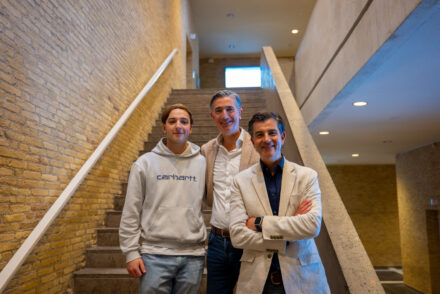From cold numbers to warm stories: how personal narratives help cancer patients after their diagnosis
A diagnosis like cancer often comes with cold statistics and complex prognoses, but numbers don’t tell the whole story. Saar Hommes, a PhD candidate at the Academic Workplace for Digital Health & Mental Wellbeing, is researching how personal narratives can help patients better understand their illness.

Imagine you’ve just been told that you are seriously ill. The doctor gives you a 60 percent survival chance for the coming year. What does that figure actually mean, and how should you relate to such a statistic? Does it apply specifically to you, or is it just an average? And what if you could also hear stories from people who have walked the same path?
These are the complex questions that Saar Hommes, a PhD candidate at Tilburg School of Humanities and Digital Sciences, is working on. She studies how both statistics and personal stories are communicated to people with life-threatening illnesses, such as cancer patients or victims of severe accidents.
What exactly did you research?
‘My research focuses on how best to convey numbers and stories to patients, especially those who are vulnerable due to illness or an accident. How can we present this information in the most personal way possible?
‘It’s essential to understand how people experience figures, such as a survival rate. For many, such numbers can be intimidating, especially for those who struggle with statistics. Additionally, I am interested in the role of stories. How helpful is it when patients can read about others who have faced similar situations? What effect does such a story have on their choices and quality of life?
‘I collaborated with various hospitals and patient groups, including the Elisabeth-TweeSteden Hospital and the Antoni van Leeuwenhoek Hospital, which specializes in cancer care. In total, around 200 patients participated in my research, which included interviews, questionnaires, and experiments.’
What are the main findings from your research?
‘One of the key conclusions is that people appreciate personalized information. Both numbers and stories have their own value. Statistics can encourage action; someone who sees things aren’t going well wants to know what they can do to improve. Should they call their doctor, visit a physical therapist, exercise more, or eat healthier?
‘Stories offer emotional support and create a sense of recognition. We found that stories are especially powerful when they match the patient’s personal situation, especially if it deviates from the average. Take, for example, a young woman with a severe form of cancer. There may be few people around her in the same boat. For this patient, a story from a similar individual can be especially empowering.
‘An 88-year-old patient, on the other hand, views life differently and might look for stories about someone who wants to spend time with their grandchildren. In this way, we ensure that the stories genuinely align with each patient’s unique situation.’
The stories that patients read are tailored to their situation. How do you do that?
‘Patients aren’t simply given a generic story. These stories are crafted using artificial intelligence and specially adapted to the patient’s situation.
‘Instead of presenting a general average, like “out of 500 people, 10 percent still experienced pain after six months,” we offer more specific information: “of people like you, one in ten still experiences pain after six months.” This approach makes the information more relevant and personal, helping patients better understand and accept their situation.
‘Additionally, patients read about fictional characters. These characters are based on data and experiences from other patients in similar situations. By reading a story about someone who resembles them, patients gain a better understanding of what their diagnosis and treatment entail. This helps prevent them from worrying unnecessarily or, conversely, being insufficiently concerned when they need to be.’
Do you have an example of such a story?
‘Take the fictional character David (76), who wonders whether he will still be able to enjoy his retirement after his melanoma treatment. Initially, he worries about his future and the impact of his illness on his daily life. But with a few small adjustments, he finds joy again in his everyday activities. He shares that he can still go for walks and engage actively with his grandchildren.
‘Stories like David’s are not only informative but also empathetic and supportive. We hope that patients identify with the characters and gain more confidence in their own ability to cope with their diagnosis.’
What stood out to you most during your research? ‘Many patients, especially older ones, felt that the character in the story worried too much. They were often at peace with their illness and said things like, “I’ve had a good life. It may be hard for that character in the story, but I don’t feel that way. The hospital is pleasant, and my family supports me.”
‘It surprised me because, before starting the research, I had assumed that patients, especially after a serious diagnosis, would experience a lot of fear and worry. The power of acceptance and the value these people place on their lives and support from loved ones offered a hopeful view on how they cope with their illness.’
Want to know more about Saar Hommes’ research? On December 13, 2024, she will defend her dissertation on the role of stories and statistics in patient communication.







